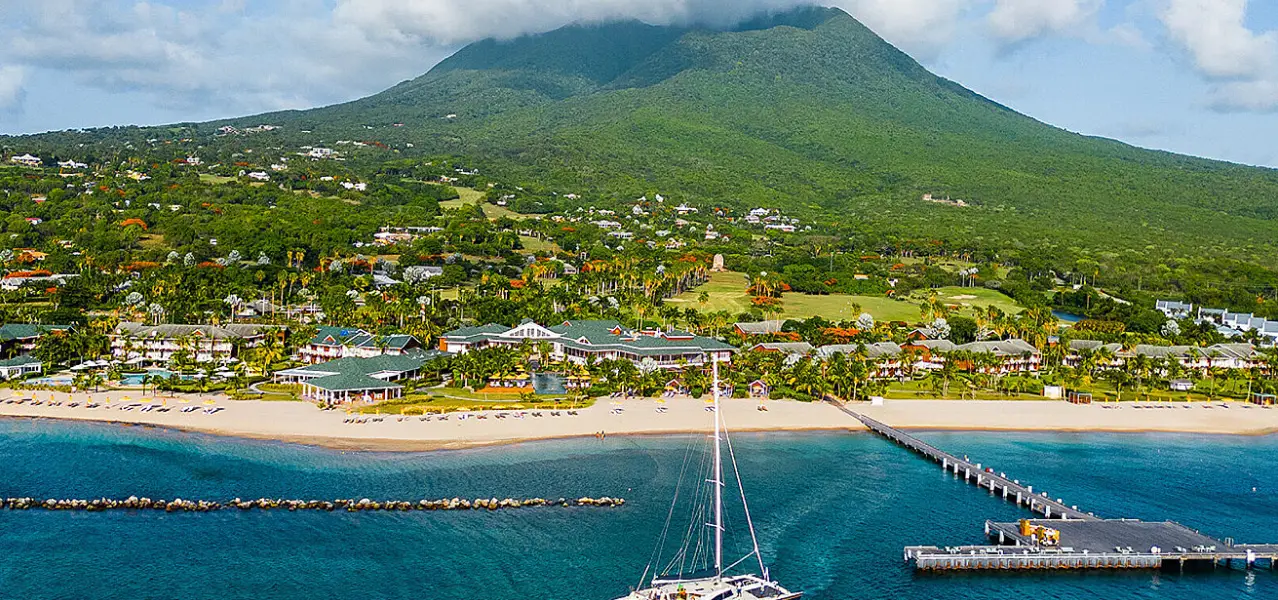About Nevis

Introduction
Nevis, nestled in the warm Caribbean Sea, plays a pivotal role in the Leeward Islands chain in the West Indies. It partners with its sister island, Saint Kitts, to form the Federation of Saint Kitts and Nevis. This sovereign nation is renowned for its stunning natural beauty and rich cultural heritage.
Geographic Location
Nevis sits at the northern tip of the Lesser Antilles archipelago, lying about 350 kilometers east-southeast of Puerto Rico. Its bustling administrative center, Charlestown, brims with history and activity.
Physical Features
The impressive Nevis Peak volcano dominates the island’s landscape, providing a dramatic backdrop. Sandy beaches skirt the island, where white coral sands mix with darker volcanic elements. Natural freshwater springs and volcanic hot springs sprinkle across the coastal plain, enhancing its charm and natural beauty.
Etymology and Historical Significance
The indigenous Kalinago people originally called the island Oualie, but Spanish explorers later renamed it Nevis “Our Lady of the Snows” in the 16th century. Inspired by a miraculous snowfall in Rome, this name captures the island’s serene and tropical ambiance.
Indigenous Legacy
For over two millennia, the Arawak and then the Kalinago peoples have inhabited the island. Rich cultural tapestry is apparent in its ties to the Arawakan language family, displaying a broad indigenous history.
European Encounters
Christopher Columbus first visited Nevis in 1493, though the island’s history with its indigenous peoples began well before this encounter. Subsequent European colonization brought profound changes, shaping its history and identity in significant ways.
Contemporary Governance
Despite being smaller in size and population than Saint Kitts, Nevis maintains a distinct identity within the federation. Premier Mark Brantley and the Concerned Citizens’ Movement lead the island, championing self-governance and autonomy. Premier Brantley steers Nevis towards prosperity and resilience.
Final Thoughts..
Nevis stands as a testament to the resilience of its people and the enduring appeal of its natural wonders. From its ancient roots to its contemporary governance, the island offers a rich blend of culture, history, and scenic beauty. It invites travelers to embark on a journey of exploration and discovery in the heart of the Caribbean.
